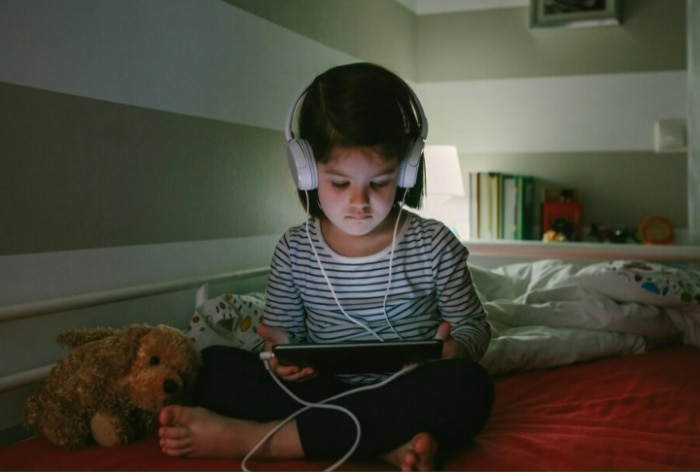How much screen time is too much? An expert reveals healthy time limits and how to reduce excessive screen time in children.
Did you know that, according to a study by the American Academy of Pediatrics, excessive screen time is linked to poor academic performance and increased behavioral problems in children? Research by Common Sense Media reveals that children ages 8 to 12 in the U.S. spend an average of 4 hours and 44 minutes in front of screens each day. Additionally, a study published in JAMA Pediatrics found that children who spend more than two hours a day in front of screens are more likely to exhibit symptoms of anxiety and depression.
These findings highlight the importance of understanding and managing children’s screen time to ensure that it has a positive impact on children’s lives. India.com got in touch with Dr Jain Neha Rajkumar, Consultant, Paediatrics and Neonatology, Sarjapur, Bangalore, who explained what screen time is, what are the appropriate time limits and how to reduce excessive use of digital devices in children.
How much screen time is too much screen time?
Screen time encompasses activities ranging from educational and prosocial, such as schoolwork, interacting with friends and family, and creating art or music, to purely recreational or even potentially harmful, such as watching inappropriate television shows, visiting unsafe websites, or playing violent video games. Understanding the distinction between positive (healthy) and negative (unhealthy) screen time is critical to managing its impact on our lives.
For children under 2, screen time should be avoided altogether, except for occasional video calls with family members. For children between 2 and 5 years old, screen time should be limited to no more than one hour per day, with even less being preferable. For older children and teens, any time that interrupts physical activity, sleep, schoolwork, meals, hobbies, or family time is considered excessive and should be reduced.
Side effects of too much screen time?
Excessive screen time can lead to a variety of adverse effects on physical, mental, social, and academic aspects of health. On the physical level, it can contribute to obesity, a sedentary lifestyle, sleep disorders, headaches, eye strain, and neck, back, and wrist pain. On the mental level, it can lead to speech delay, hyperactivity, aggression, violence, desire for instant gratification, lack of concentration, FOMO (fear of missing out), FOBLO (fear of being left out), cyberbullying, media addiction, body image distortion, drug use, self-harm, anxiety, and depression. On the social level, excessive screen time can reduce socialization and increase social anxiety. On the academic level, it can lead to lower academic performance.
5 ways to reduce screen time for kids
Creating “digital rules” helps children feel safe by setting boundaries and guidelines for behavior. To promote healthy media use, provide a warm, nurturing environment where children are guided with respect and empathy, avoiding the use of screens to calm or distract them.
- Balance screen time with adequate periods for sleep, physical activity, studying, interacting with family, eating, and spending time on hobbies, and avoid screen use at least one hour before bedtime to prevent sleep disturbances caused by blue light.
- Follow the 20-20-20 rule to reduce eye strain: Every 20 minutes, take a 20-second break to look at something 20 feet away.
- Encourage children to avoid multitasking by turning off all digital devices while doing offline tasks.
- Control online content and interactions by viewing and monitoring what children are exposed to, avoiding violent content, and ensuring appropriate privacy settings, safe search engines, and anti-virus software. Encourage the use of educational media, physical activity, and creative play offline, using media moments to convey family values and interpret media messages.
- Designate digital-free zones, such as bedrooms, dining tables, kitchens, bathrooms, and motor vehicles, and implement digital fasting periods to strengthen family bonds. Finally, model healthy media use by practicing good habits and creating a family media use plan.
By implementing these guidelines and being aware of the impact of screen time, parents can help their children develop a healthier relationship with digital media, promoting their overall well-being and success.
